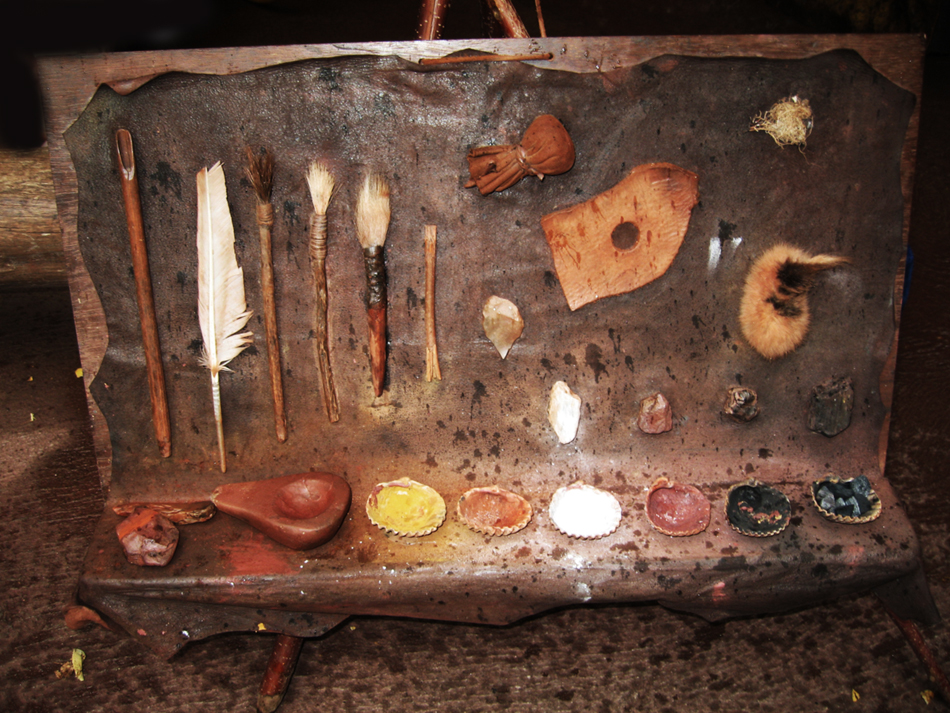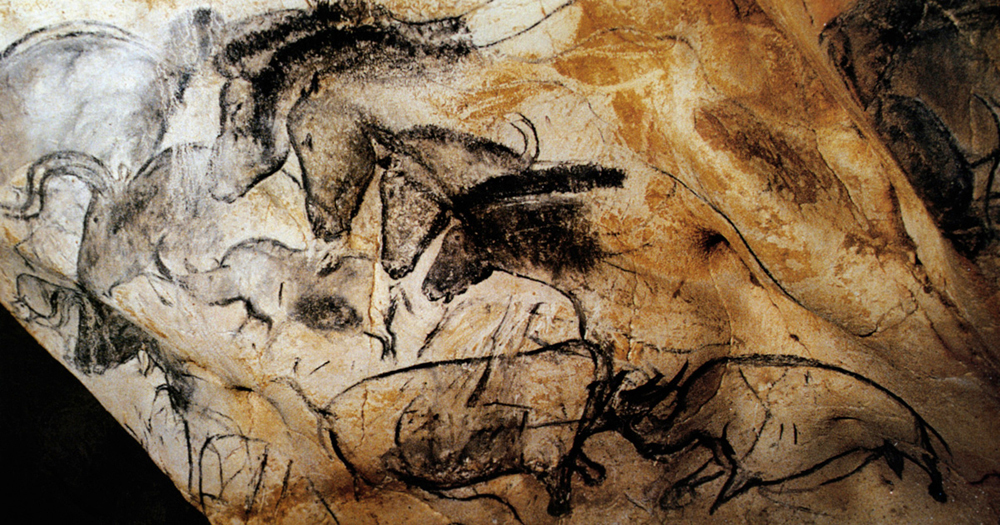


Rock art theories: a brief overview of the salient theories concerning Palaeolithic rock art in Europe and around the world.
The artists and the art
There is one approach to rock art that hopes to shed light on the art and its meaning by considering the artists and the art. For European Upper Palaeolithic art, one of the common questions asked is whether the cave art appeared over this time - the very long duration of at least 25,000 years - as a steady stream or as sporadic events.

As a guide but not a definitive explanation, in his publication Cave Art Jean Clottes provides 3 broad artistic eras, each centred around an emblematic cave. Chauvet Cave includes works from both the Aurignacian and the Gravettian periods, between 35,000 and 22,000 years ago. Lascaux Cave covers the time span between 22,000 to 17,000 years ago, and bridges the Solutrean to the Early Magdalenian periods. Niaux Cave covers the time between 17,000 and 11,000 years ago, and the art of the Middle and Upper Magdalenian.
And what of the quality and consistency of the art? With the discovery of Chauvet and the subsequent dating of the images, old theories were abandoned as it became evident that paintings of a very high standard and complexity were created at a very early age. Previously, researchers such as Abbe Breuil and Leroi-Gourhan assumed that art developed along a linear trajectory, but this is no longer supported by the archaeological record; it was more of an ossilation. Three peaks occurred, for example, in Europe with Chauvet, Lascaux and Niaux.

Were there many artists, or perhaps just a few? Another apparent contradiction which must be considered in this context is that Palaeolithic art displays a remarkable uniformity in its subject matter and longevity, but also great diversity in form. Researchers are able to identify a single artistic hand in large compositions. In Chauvet, the Panel of the Horses (above) are thought to have been drawn by the same artist; they share a likeness as well as the fact that the artistic effect gained from mixing the charcoal with the surface clay produced the same colours and hues. Once completed, the artist highlighted the four horses by scraping the outer edges of the profiles. Likewise, Altamira, Niaux and Peche Merle demonstrate a strong artistic uniformity.
If Palaeolithic art displays a uniformity both stylistically and technically, as well as in its subject matter, were there schools of art? There seems to be an accepted artistic convention for the female figurines; were styles and techniques passed down the generations and/or shared between groups?
Read more from 'Cave Art' by Jean Clottes:
http://www.bradshawfoundation.com/books/cave_art.php
Ice Age Art: Arrival of the Modern Mind by Jill Cook:
http://www.bradshawfoundation.com/books/ice_age_art.php
Visit the France Rock Art Archive:
http://www.bradshawfoundation.com/france/index.php
Comment
by Bradshaw Foundation
Monday 04 December 2023
by Bradshaw Foundation
Friday 30 June 2023
by Bradshaw Foundation
Thursday 06 April 2023
by Bradshaw Foundation
Thursday 24 November 2022
by Bradshaw Foundation
Tuesday 27 September 2022
by Bradshaw Foundation
Thursday 08 September 2022
by Bradshaw Foundation
Tuesday 19 July 2022
by Bradshaw Foundation
Monday 06 June 2022
by Bradshaw Foundation
Friday 11 March 2022
by Bradshaw Foundation
Wednesday 02 March 2022
by Bradshaw Foundation
Thursday 26 August 2021
by Bradshaw Foundation
Monday 16 August 2021
by Bradshaw Foundation
Tuesday 06 July 2021
by Bradshaw Foundation
Thursday 06 May 2021
by Bradshaw Foundation
Thursday 06 May 2021
by Bradshaw Foundation
Tuesday 16 March 2021
by Bradshaw Foundation
Monday 04 December 2023
by Bradshaw Foundation
Friday 30 June 2023
by Bradshaw Foundation
Thursday 06 April 2023
by Bradshaw Foundation
Thursday 24 November 2022
by Bradshaw Foundation
Tuesday 27 September 2022
by Bradshaw Foundation
Thursday 08 September 2022
by Bradshaw Foundation
Tuesday 19 July 2022
by Bradshaw Foundation
Monday 06 June 2022
by Bradshaw Foundation
Friday 11 March 2022
by Bradshaw Foundation
Wednesday 02 March 2022
by Bradshaw Foundation
Thursday 26 August 2021
by Bradshaw Foundation
Monday 16 August 2021
by Bradshaw Foundation
Tuesday 06 July 2021
by Bradshaw Foundation
Thursday 06 May 2021
by Bradshaw Foundation
Thursday 06 May 2021
by Bradshaw Foundation
Tuesday 16 March 2021
Friend of the Foundation











